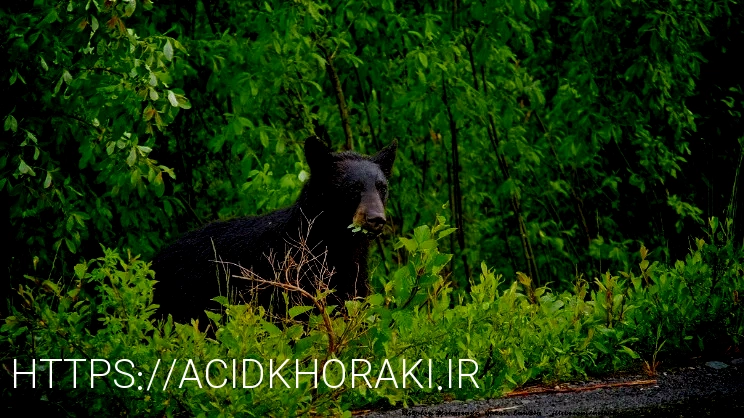Water Buffalo Description, Habitat, Image, Diet, and Interesting Facts
Due to their docile nature, water buffalo have been domesticated for thousands of years – if not longer. The wild water buffalo (Bubalus arnee) is the domestic water buffalo’s closest relative, though it is Endangered in the wild. With only a few thousand individuals left, this species faces an unpredictable future. The two types of domesticated water buffalo came about approximately 5,000 and 4,000 years ago. Humans domesticated the first type in India, and the second type in China.
Males breed with as many females as possible, and a single male can mate with up to 100 females in a single year. They are quite heavy animals, and can weigh anywhere from 660 lbs. To 1,210 lbs., though it is not unusual for them to surpass 2,000 lbs. Buffaloes, like cattle, are ruminants meaning that whatever they use the rumen to digest whatever they eat.
Standing 5 to 6.2 feet tall at the shoulder, wild water buffalo are formidable mammals with sparse gray-black coats. Males carry enormous backward-curving, crescent-shaped horns stretching close to 5 feet long with deep ridges on their surface. Females are smaller in size and weight, but they also have horns, although they are proportionately smaller. The key differences among these types are in their physical appearance, utility, and distribution. For instance, the river buffalo has higher milk production, while the swamp buffalo is more suited for laborious tasks.
Conservation programs for wild water buffaloes are underway in several countries, focusing on habitat restoration and anti-poaching measures. Protected areas have been established, and there are initiatives to breed the wild water buffalo in captivity to improve their numbers. There are two different species of buffalo that go by the name “water buffalo,” the domestic water buffalo and the wild water buffalo. However, we call the domestic version simply “water buffalo” more frequently than the wild species. When part of a farmer’s herd, buffalo eat anything available at the farm; including the hay and food grains that other farm animals feed on. The water buffaloes also eat seaweed and other water plants while lying in the water bodies.
There is a vast variety of these animals as they have been the most interbred mammals. Water buffaloes are highly adapted to aquatic environments, which helps them regulate their body temperature and protect against parasites. Second, wet mud provides effective relief against the prevalent heat of the tropics. Water buffalo will roll in the mud, coating themselves effectively. These animals do not have a mating season, but usually avoid breeding in extremely hot conditions.
Water buffaloes eat reeds, Arundo donax, a kind of Cyperaceae, Eichhornia crassipes, and Juncaceae. Donax, are a major problem in some tropical valleys and by eating them, the water buffaloes may help control these invasive plants. Water buffaloes are highly adaptable but they do prefer areas with abundant water. Wet grasslands, marshes, and river valleys make ideal habitats for these animals.
A typical herd consists of females and their offspring, led by a dominant male. Solitary males are also common and usually older individuals who have been ousted from a herd. Domestic water buffaloes have a much broader distribution, being utilized in agriculture globally, from Italy and Egypt to Australia and Brazil. A domesticated Asian Water BuffaloThis isn’t true of all domestic animals, though. Domestic pigs are still highly related to their wild relatives – the feral pigs. Feral pigs are actually so prevalent in some parts of the United States and South America that they are treated as a pest species.
Females normally produce calves every other year, after a gestation of 9 to 11 months. Young bulls typically remain with maternal herds, which consist of around 30 buffalo, for three years after birth. Water buffalos do not make particularly good house pets, but they are good farm animals.
Males are generally larger and have thicker horns compared to females. A fully-grown male can weigh up to 2,650 lbs (1,200 kg) while females generally weigh around 1,650–2,200 lbs (750–1,000 kg). The water buffalo is not just a peaceful bovid from Asia – it is also the perfect example of several important biological concepts. The different breeds have slightly different reproductive rates and habits. The weaning process varies from breed to breed, and region to region.

These large members of the Bovidae family are related to bison, cows, antelope, wildebeest, sheep, goats, and more. She has a bachelor’s degree in Agriculture and masters degree work in large animal reproduction. Currently, she lives in Southern California where she enjoys all things outdoors. This milk is also used to produce all kinds of dairy products like butter, cheese, cream, ghee, etc. Buffalo milk is used to make the famous cheeses in the world like ricotta, mozzarella, etc.
They are active during the day and at night, depending on where they live. Most herds contain females and their babies, while males are more solitary. The wild water buffalo is classified as “Endangered” by the International Union for Conservation of Nature (IUCN).
There are several countries with large populations of these creatures. The highest populations live in India, Pakistan, China, Egypt, Nepal, Check this for Doeat.top What do wolves eat Iran, Myanmar, Italy, Turkey, and Vietnam. These large bovines require only one factor to survive in a particular habitat, water!

The domesticated form is much more numerous and is not considered at risk. Most water buffalo work in close proximity to humans for milk production or field plowing. Depending on the area, women usually care for the milk production buffalo, while men work with the working buffalo. Since they are majorly found in Asia and Africa, due to the humid weather the buffaloes spend a lot of time laying in still water bodies. These animals have specially designed hooves that help them wade through the thick mud in the swamps and water bodies.
The smaller size of species like the pig may have contributed to their survival into the human era – since humans wiped out the last auroch ages ago. For this reason, we will be focusing on the domesticated species Bubalus bubalis instead of the wild Bubalus arnee. The water buffalo is a beautiful member of the bovine family that has been an integral part of human history for over 5,000 years. The buffalo eats grasses, shrubs and bushes as well as any hay or grains the farmer might provide to it. They have many uses on a farm including helping with crops, providing milk and cheese as well as providing meat and leather. Wild water buffaloes are larger, have longer horns, and are generally more robust compared to their domestic counterparts.
While Cape Buffalo move in large herds across parts of Africa, water buffalo are more adapted to the wet, tropical conditions of Southeast Asia. Wild water buffalo are at-risk and live only in a small number of protected areas stretching across India, Nepal, and Bhutan, and a wildlife reserve in Thailand. And populations are likely to diminish as they are interbred with domesticated water buffalo. Water buffalo spend much of their day submerged in the muddy waters of Asia’s tropical and subtropical forests. Their wide-splayed hoofed feet prevent them from sinking too deeply in the mud and allow them to move about in wetlands and swamps. These marshes provide good cover and rich aquatic plants to forage on, although water buffalo actually prefer to feed in grasslands on grass and herbs.
These buffaloes used to carry people and their products from one place to another by pulling a cart. They were also bartered in exchange for other goods that a farmer would want. The farmers should be giving fibrous rich roughage to the domestic buffaloes to increase the nutrients of the milk that the buffalo produces. If a buffalo can’t find any grass, they also resort to eating shrubs and bushes instead. One particularly fascinating behavior is their symbiotic relationship with certain bird species. Birds like cattle egrets are often seen riding on their backs, feeding on parasites and insects flushed out of the grass by the buffaloes.

Members of the buffalo family have a stocky build and are slate grey in color, with horns growing backward and curving upward towards the end. We’ll also touch upon the domesticated variety, which has been an essential part of human agriculture and lifestyle for thousands of years. The huge horns of a buffalo help in putting up a good fight against its natural predators in the jungle-like the lion, tiger, crocodile, etc. So it can be comfortably said that all parts of a buffalo can be put use to for our various day to day activities. The horns of a buffalo are still used to make ornaments and some indigenous tribes also make weapons of these horns.
The primary threats to the wild water buffalo population include habitat loss and degradation, primarily due to agriculture and human settlement. Poaching and competition with domestic species also pose significant threats. The fact that the wild water buffalo species are all Endangered is not surprising.
The wild counterpart of the cow – known as the auroch – is now completely extinct globally. Cows, however, outnumber almost all wild animal species besides some insects. Humans breed them selectively for milk production, meat production, docile behavior, or whatever the people need them for. There are many different breeds of water buffalo across the regions that they are popular. During floods, they graze submerged, raising their heads above the water and carrying quantities of edible plants.

The gestation period for water buffaloes is around 10–11 months, after which a single calf is usually born, although twins are not uncommon. In their natural habitat, adult water buffaloes have very few predators due to their size and formidable horns. However, calves are vulnerable and can fall prey to large carnivores like tigers, and crocodiles. One remarkable feature of the water buffalo is its digestive system, well-adapted for breaking down tough plant matter that other animals can’t digest. Moreover, their eyes and nostrils are positioned high on the head, allowing them to breathe and see while mostly submerged in water. As their aquatic lifestyle would suggest, they like to eat water plants.
Julien is an exploration-minded, curiosity-driven traveler and blogger.

Water buffaloes are generally diurnal, most active in the morning and late afternoon. They are known to wallow in mud or water, which helps regulate their body temperature and protects them from parasites. Water buffaloes are imposing animals with a robust body and a relatively short, thick neck. They have a skin color that ranges from ash grey to dark brown, covered with sparse, coarse hair. While the division occurred millions or hundreds of millions of years ago, early whales were terrestrial tetrapods. Like the water buffalo, they likely ventured into the water to carve out a niche.
Researchers believe that the wild water buffalo, Bubalus arnee, was the ancestor of domestic water buffalo. They often visit water bodies where they can access softer, aquatic plants. Domesticated water buffaloes are often given supplementary feed, especially if used for milk or meat production.
The wild buffaloes which are found in America are called the “American Bison”. The same wild animals are called “Cape Buffaloes” on the African continent. The Buffalo; a member of the bovid family is one of the largest mammals found across the world. The Buffalo was a wild animal that was only domesticated around 5000 years ago in India.


